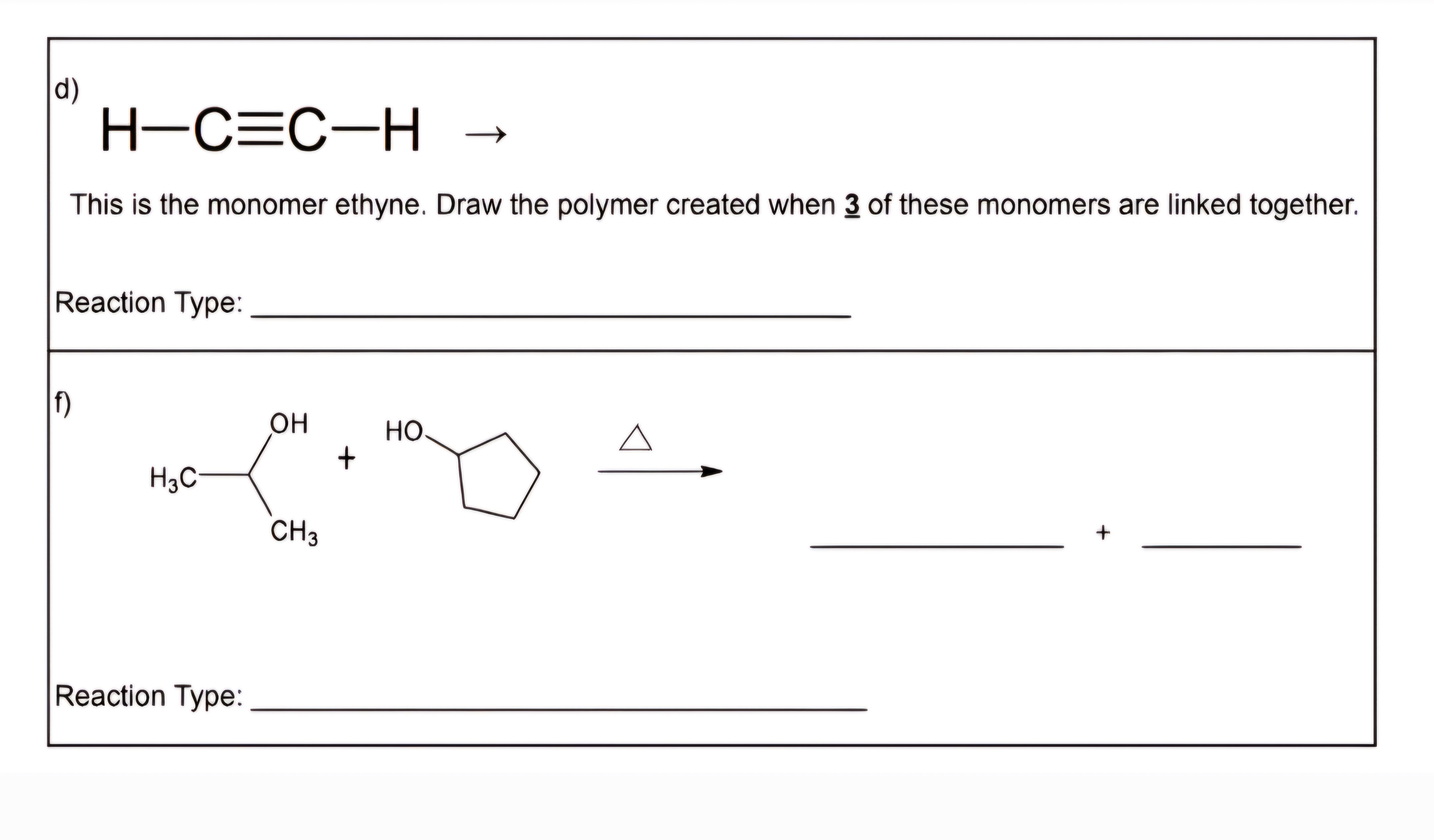Questions
d hcch this is the monomer ethyne draw the polymer created

Answers :
Let's address each question one by one:
Part (d)
Monomer: Ethyne (Acetylene), represented as .
Task: Draw the polymer created when 3 ethyne monomers are linked together.
Ethyne can undergo polymerization typically through a reaction known as "chain-growth polymerization" where triple bonds convert to single bonds to form a long chain.
Polymer from 3 Ethyne Monomers:
However, when these monomers link, they form a linear chain:
The reaction type is Polymerization.
Part (e)
Reactants:
- Propanol
- Cyclopentanol
The given reaction type symbol (a delta above the arrow) typically indicates heating, suggesting a reaction such as dehydration.
Reactants and Products:
- Alcohols (Propanol and Cyclopentanol) can undergo a dehydration reaction upon heating in presence of a strong acid.
- Dehydration of alcohols leads to the formation of alkenes and water.
When these two alcohols undergo dehydration, they form the respective alkenes, typically:
- Propene
- Cyclopentene
Reaction Products: (Propene) the alkene form of cyclopentanol:
The reaction type here is Dehydration Reaction.
Summary:
- Part (d) Reaction Type: Polymerization
- Part (e) Reaction Type: Dehydration Reaction
Products:
- For propanol: (Propene)
- For cyclopentanol: Cyclopentene
Answered By

